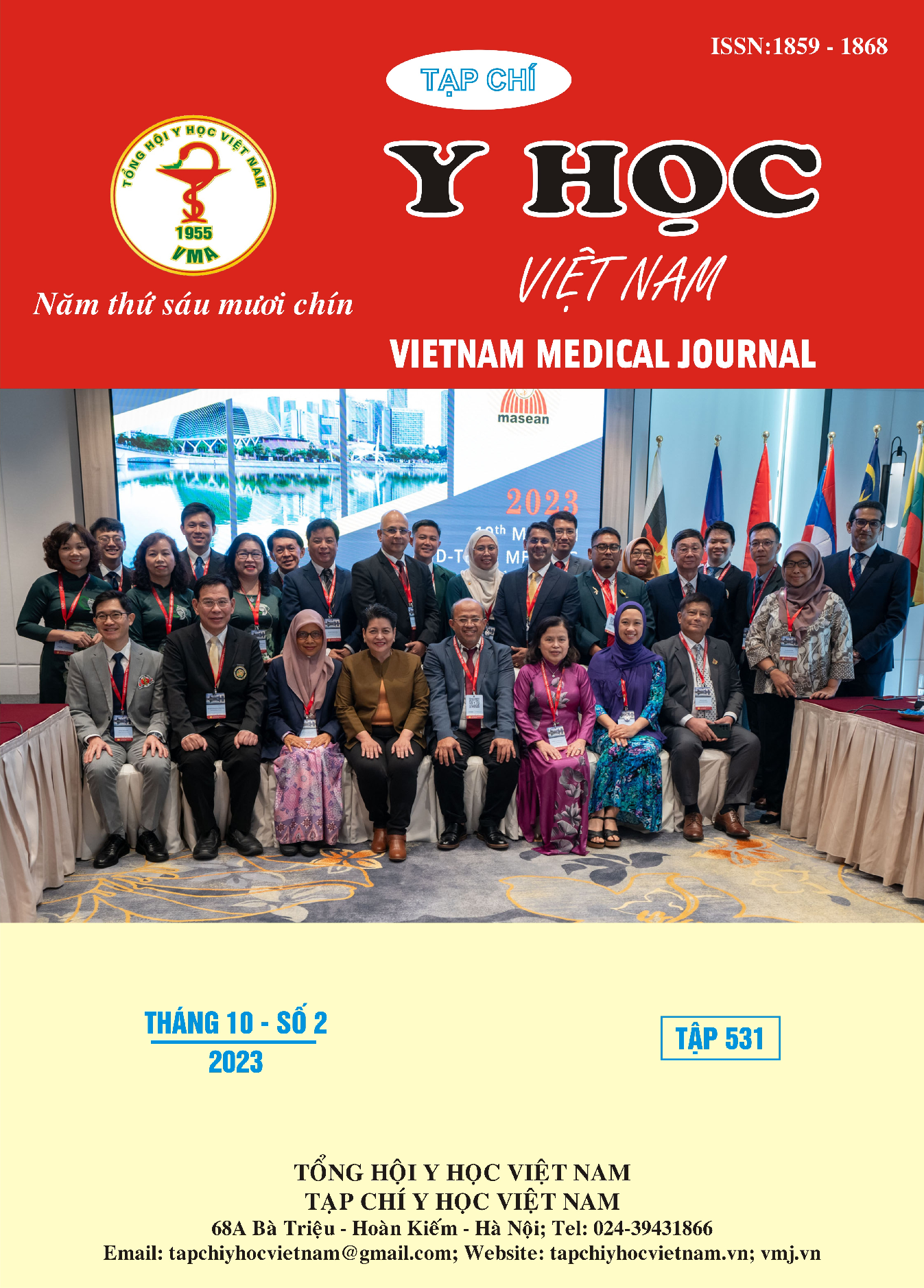DESCRIBE CLINICAL FEATURES AND EVALUATE THE COMBINATION OF ENDOSCOPIC SINUS SURGERY WITH POSTOPERATIVE RINSING BY PULSE MACHINE TO TREAT NON_INVASIVE FUNGAL RHINOSINUSITIS
Main Article Content
Abstract
Objectives: To describe the clinical features and evaluate the results of endoscopic sinus surgery combined with postoperative rising with a pulse machine for non-invasive fungal rhinosinusitis. Subjects and methods: Description of a series of cases with 190 patients (who were diagnosed, operated on, and postoperative rinsed at 108 Hospital from 01/2019 to 05/2022. Results: Mean age 52.78 ± 8.9, male/female ~ 1:2, the group of patients with chronic sinusitis (45.26%), office workers (39.4). %) and industrial workers (29.47%), common symptoms: postnasal discharge (71.05%), headache and facial pain (41.05%), nasal obstruction (50.53%), sneezing (22.63%), cough (29.47%), meatal stenosis (73.68%), deviated septum (67,36%), polyps (39.47%, pus nasal discharge (57.37%), dark brown mass (9,47%), sinusitis on CT: maxillary 91.05%), ethmoid (65.79%), frontal (26.84%), sphenoid (35.26%), lesion on one side (92.62%), 100% Aspergillus, good recovery after surgery 1 month, 3months, 6 months, 9 months, 1 year respectively 69.4%, 86.32%, 92.11%, 96.84% and 98.42%, recurrence rate (1,05%), sinus CT evaluated after 1 year did not detect recurrence. Conclusion: Clinical features of VMXDNKXL are atypical like other symptoms of sinus disease, hypodense and expansion inside the sinus on CT scanner is a high suggestion for fungus, surgery is always indicated to drain the sinuses and removing fungal, combined with postoperative rinsing with a pulse machine to help reduce the recurrence rate.
Article Details
Keywords
Fungal sinusitis; Fungal sinus; Non-Invasive Fungal Rhinosinusitis.
References
2. Karthikeyan P, Nirmal Coumare V. Incidence and Presentation of Fungal Sinusitis in Patient Diagnosed with Chronic Rhinosinusitis. Indian J Otolaryngol Head Neck Surg. 2010;62(4):381-385.
3. Deutsch PG, Whittaker J, Prasad S. Invasive and Non-Invasive Fungal Rhinosinusitis—A Review and Update of the Evidence. Medicina (Mex). 2019;55(7):319.
4. Alghonaim Y, Alfayez A, Alhedaithy R, Alsheikh A, Almalki M. Recurrence Pattern and Complication Rate of Allergic Fungal Sinusitis: A 10-Year Tertiary Center Experience. Int J Otolaryngol. 2020;2020:9546453.
5. Ms S, S A, H N. Frequency of Granulomatous Invasive Fungal Sinusitis in Patients with Clinical Suspicion of Chronic Fungal Rhinosinusitis. Cureus. 2019;11(5).
6. Shetty S, Chandrashekar S, Aggarwal N. A Study on the Prevalence and Clinical Features of Fungal Sinusitis in Chronic Rhinosinusitis. Indian J Otolaryngol Head Neck Surg. 2020;72(1):117-122.
7. Dall’Igna C, Palombini BC, Anselmi F, Araújo E, Dall’Igna DP. Fungal rhinosinusitis in patients with chronic sinusal disease. Braz J Otorhinolaryngol. 2005;71(6):712-720.


